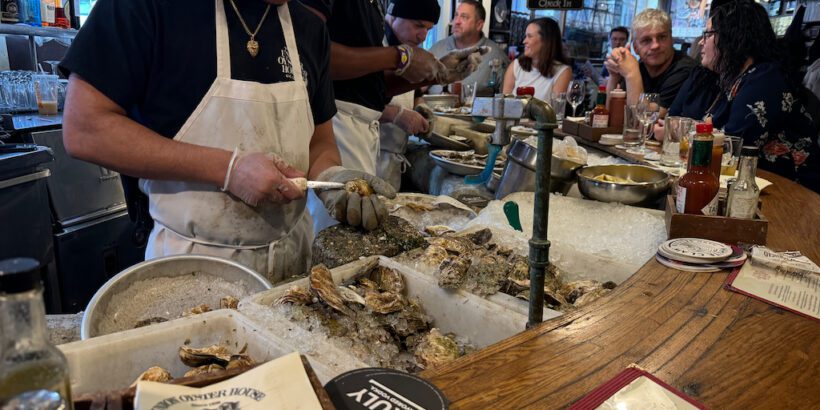Boston is an absolute goldmine of historical gems, and you’ll find them scattered throughout the city. Whether you’re strolling along the Freedom Trail, taking in the historic charm of Fenway Park, or exploring other captivating sites, there’s no shortage of intriguing places to discover in the city.
And one of these hidden treasures is none other than the Union Oyster House, proudly holding the title of the oldest continuously operating restaurant in the country. In this piece, we’ll delve into the captivating history behind this venerable establishment and provide an honest review based on my recent dining experience.
Table of Contents
What is the Union Oyster House?
The Union Oyster House holds the esteemed title of not only being Boston’s oldest restaurant but also the longest continuously serving restaurant in the United States. From the moment its doors swung open in 1826, they’ve never closed to diners.
Indeed, the walls of this iconic eatery have stood witness to pivotal moments in history dating back to before the Revolutionary War.
From hosting future King Louis Philippe to being graced by luminaries such as Presidents FDR and JFK, not to mention serving as the birthplace of the toothpick in the United States, this restaurant occupies a truly unique and special place in the heart of Boston’s historical legacy.
See also: Visiting Boston’s Rainbow Swash: From Controversy to Cultural Icon
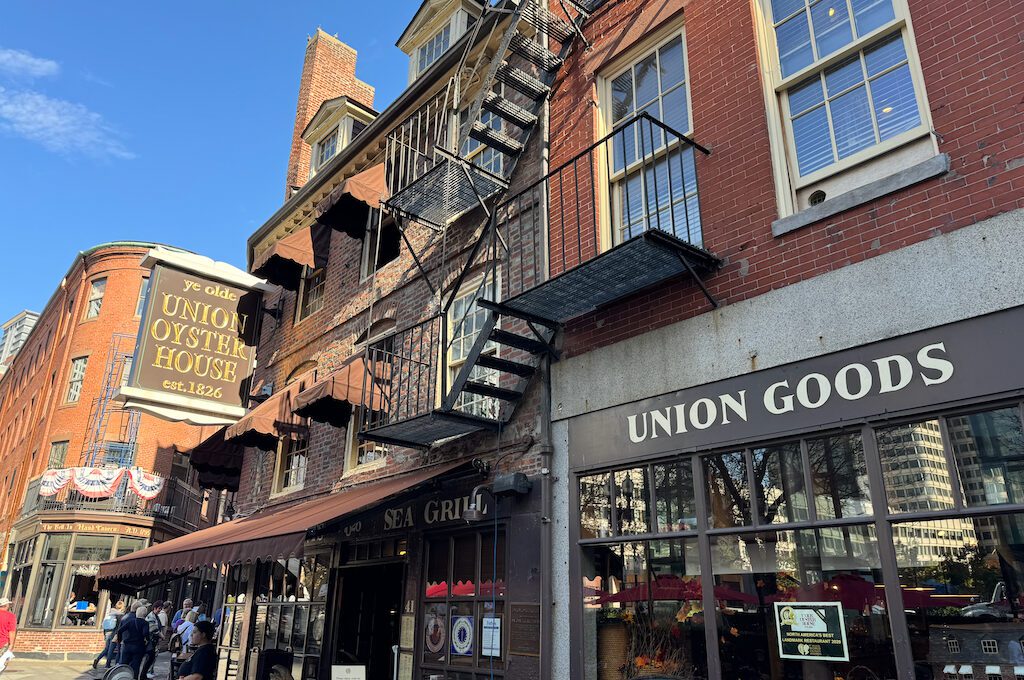
History of the Union Oyster House
The Union Oyster House has quite the history, running deep into the annals of American heritage. This eatery threw open its doors back in 1826, but the building itself had seen plenty of action long before that.
As for the building’s birthdate, it’s a bit of a mystery, but it probably sprouted up shortly after the 18th century began, perhaps in the ballpark of 1704.
Before the Union Oyster House came into the picture, Hopestill Capen set up shop here, peddling dress goods under the eye-catching sign “At the Sign of the Cornfields” during the 1740s.
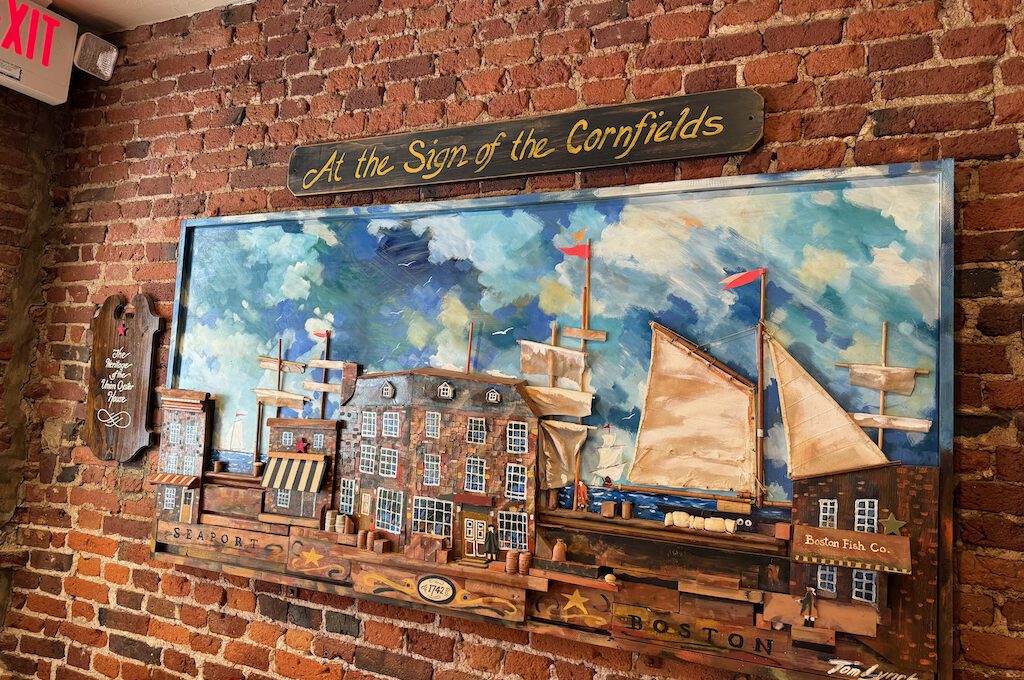
Fast forward to 1771, and the famous printer Isaiah Thomas was busy cranking out “The Massachusetts Spy.” Known for its outspoken support of the Patriot cause and its coverage of events leading up to and during the Revolution, it’s thought to be the nation’s oldest newspaper.
A few years later, in 1775 when Capen’s store went through a bit of a transformation, it became the headquarters for none other than Ebenezer Hancock, who held the esteemed title of being the Continental Army’s inaugural paymaster.
So, when folks today chow down on their seafood delights, they’re doing so in the very place where Federal troops got their “war wages” from the official pay-station.
And, as if that wasn’t enough history for one spot, during the Revolutionary days, you’d often find the Adams, Hancock, and Quincy ladies, along with their neighbors, hanging out in the Capen House, busily sewing and patching up clothes for the colonists.
The year 1796 brought a dash of royalty to the Union Oyster House, as the future King of France, Louis Philippe, took up residence on the second floor. Exiled from his homeland, he found a rather intriguing way to make a living – teaching the finer points of French to the fashionable young ladies of Boston.
As oysters gained popularity as a delectable treat in late 18th-century New England, oyster houses began popping up in many cities. They became places where folks gathered to chew the fat about politics and current affairs and so it’s no surprise that around that time, the building’s purpose underwent an oyster-related transformation.
In 1826, Capen’s Dry Goods Store closed its chapter, making way for the restaurant’s grand entrance onto the scene. Originally, it went by the moniker Atwood’s Oyster House but would end up changing names a couple of times.
From around 1842 to 1860, it was known as Atwood & Hawes and then Atwood & Bacon from the late 1800s to 1916. By 1916, the establishment settled into its current name, “Union Oyster House.”
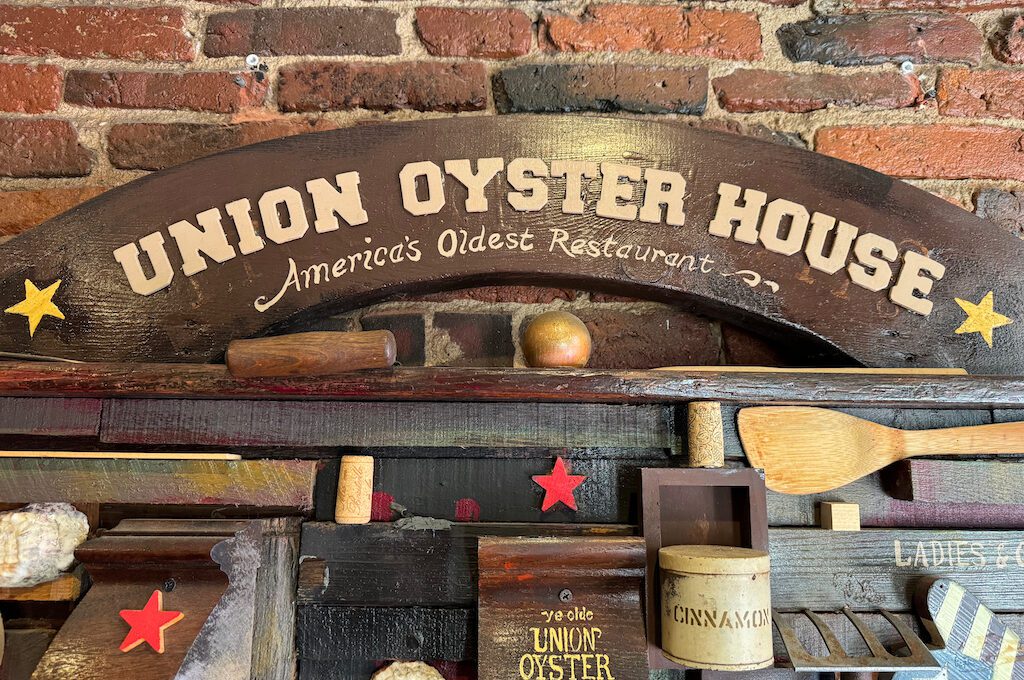
The oyster legacy at the Union Oyster House is a real gem, thanks to its iconic semi-circular Oyster Bar. Even today, you can pull up a stool and witness the art of oyster shucking in action. Remarkably, this Oyster Bar stands as the lone survivor of its kind in the entire country, faithfully carrying on the same traditions as it did back in 1826.
And if the oyster bar could talk, it would undoubtedly regale you with tales of a distinguished regular, Daniel Webster. He was a constant fixture here, partaking in his daily ritual of sipping a tall tumbler of brandy and water while polishing off no less than half a dozen plates of oysters.
Ready for a quirky historical tidbit? The Union Oyster House holds the honor of being the birthplace of the toothpick in the United States. A fellow named Charles Forster from Maine took the initiative to import these slender picks all the way from South America, forever changing our post-meal dental hygiene habits.
And if that’s not enough historical intrigue for you, consider the Kennedy’s enduring love affair with this place. President JFK, in particular, had a soft spot for it, often retreating to the privacy of the upstairs dining room for his feasts. His favorite haunt, fittingly dubbed “The Kennedy Booth,” was dedicated to his memory back in 1977 and still graces the second floor.
Dining at the Union Oyster House
When it comes to dining at the Union Oyster House, it’s a bit of a mixed bag.
Our recent visit on a Friday had us making reservations for 11:45 AM, which turned out to be a wise move. While it didn’t seem like reservations were 100% necessary – we spotted at least one couple being seated without them – the waiting game can be a bit unpredictable.
So, getting a table in a reasonable time frame might sometimes feel like a quest. To ensure a smooth and hassle-free dining experience, my advice is to play it safe and secure those reservations in advance.
The good thing about the Union Oyster House is that it is located right on the Freedom Trail so it’s really easy to find. If you wanted to start the Freedom Trail at Boston Commons you could make a reservation for about 2 to 2.5 hours after you start and with a 15-minute reservation cushion that should give you enough time to explore those places.
We were led to our table up on the cozy second floor, and the ambiance was like a time warp to a charming old tavern with its dim lighting.
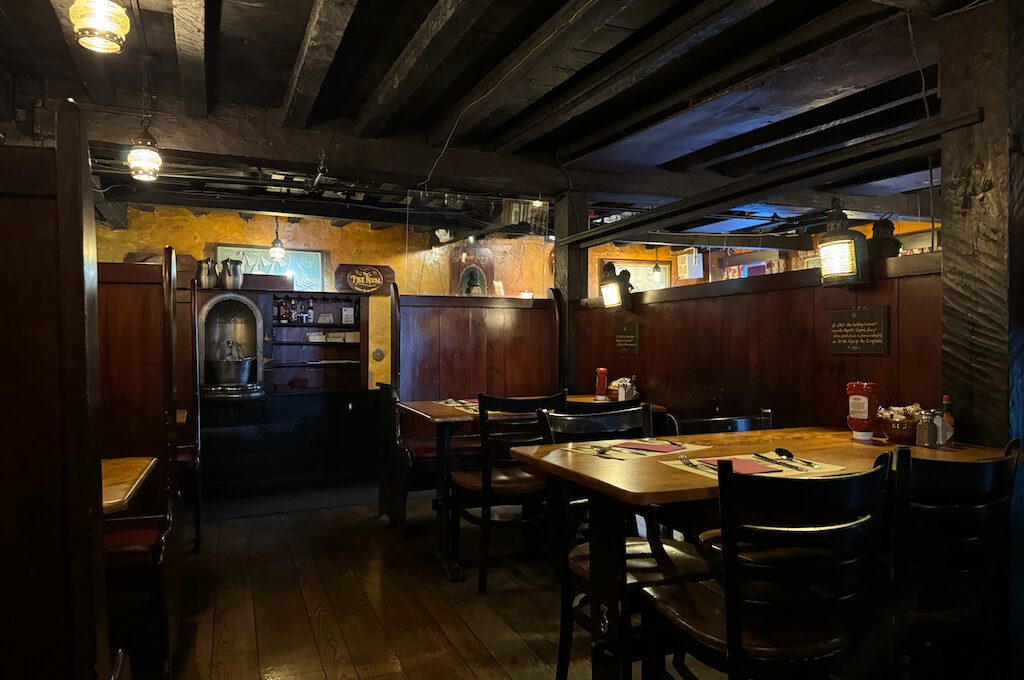
To kick things off, they brought out some scrumptious cornbread. And, naturally, I couldn’t resist ordering a little bit of everything – clam chowder, oysters, crabcakes, and a lobster roll. When you’re at a place like the Union Oyster House, you’ve got to go big or go home.
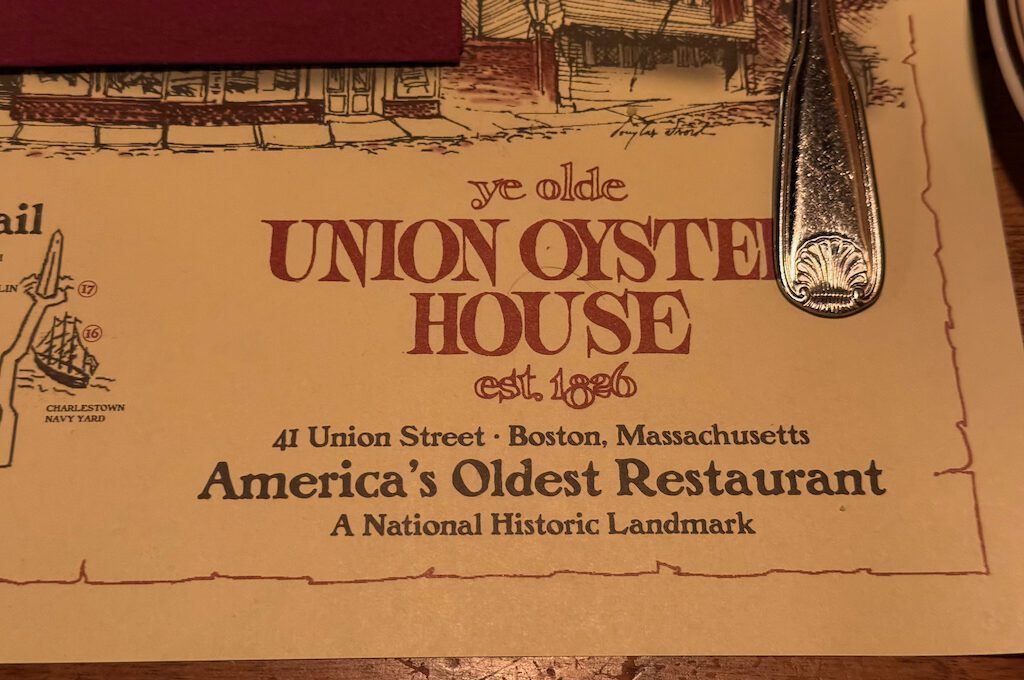
As we waited for our delectable array of dishes, I decided to take a little tour around the restaurant. The place is a treasure trove of memorabilia, a bit like my visit to the Buckhorn Exchange in Denver — the oldest restaurant in the Mile-High City.
You’ll find all kinds of vintage items scattered about, from seats and artifacts straight out of Fenway Park to an assortment of quirky collectibles and artwork with a distinctive Boston flavor.
There’s a dedicated section in the restaurant, the Freedom Trail Room, where they’ve adorned the walls with artwork representing each of the major stops along the historic Freedom Trail.
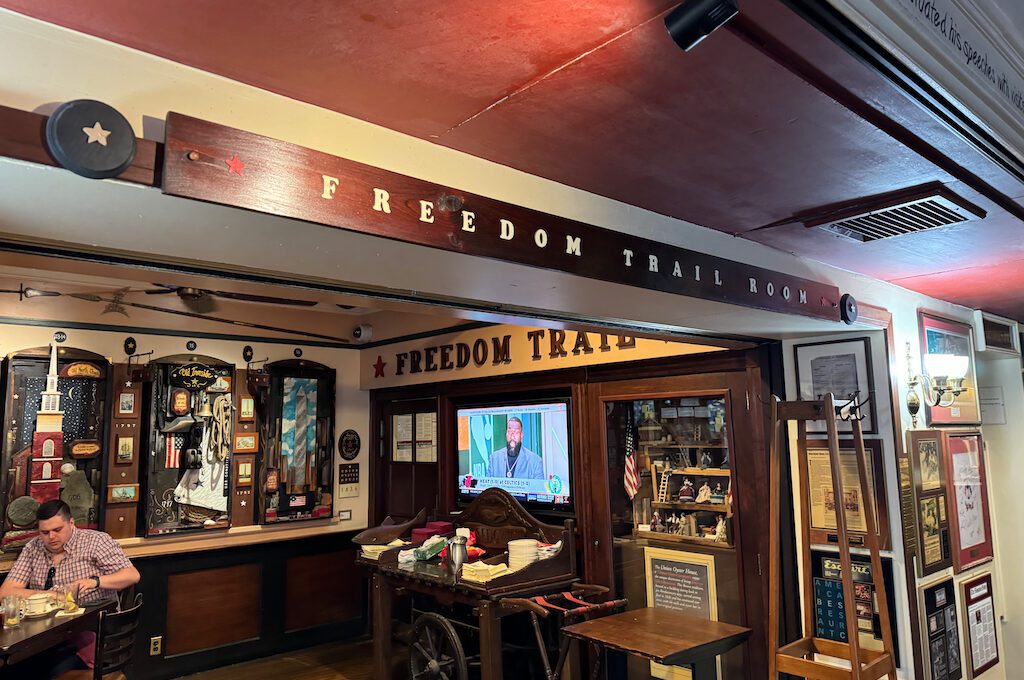
If you decide to perch yourself at the bar where the venerable Daniel Webster used to hold court, you can marvel at the oyster-shucking action right before your eyes. It’s like a front-row seat to culinary history in the making.
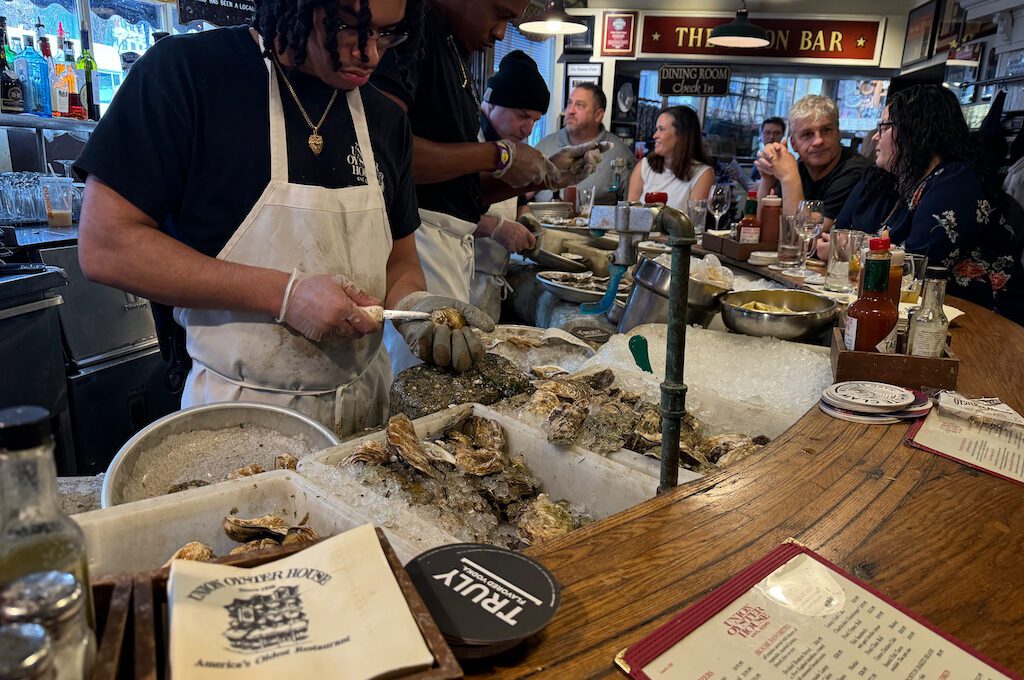
Venturing upstairs, I couldn’t resist the allure of a door leading to one of the most colossal lobsters my eyes had ever beheld. This aquatic behemoth was the “catch of the day” back in 1950, and just thinking about its sheer size made me ponder the insane amount of lobster meat it would have produced at the ripe old age of over 90 years. It’s a must-see for anyone making the pilgrimage to this historic establishment.
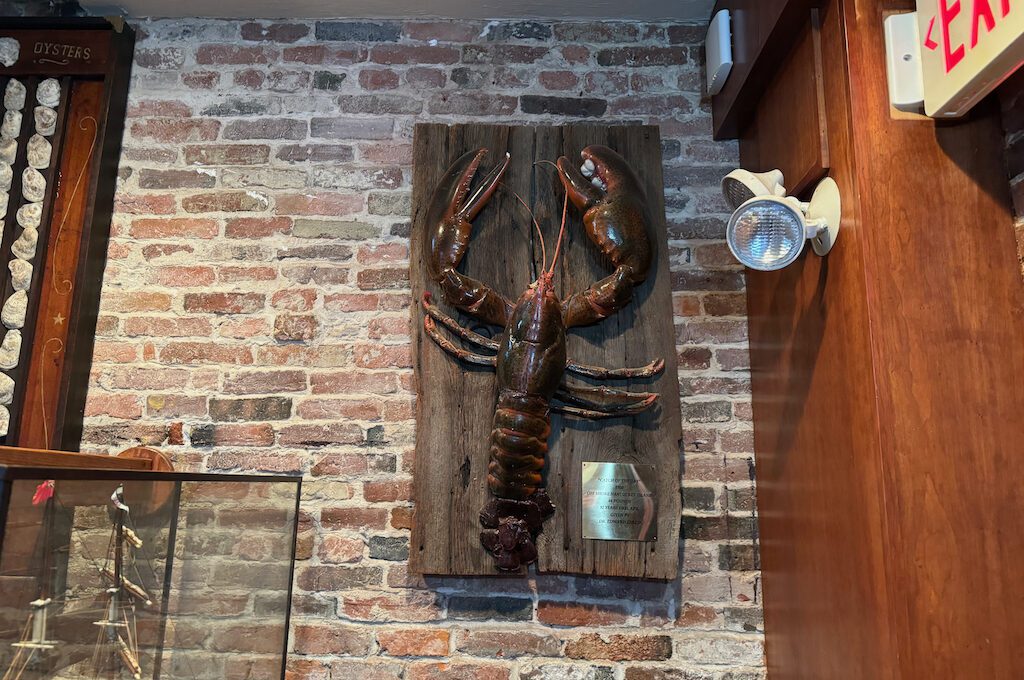
My curiosity led me to ascend a few more stairs, where I found myself captivated by an array of artwork. The walls were adorned with paintings and signs that eloquently told the story of the building’s rich history.
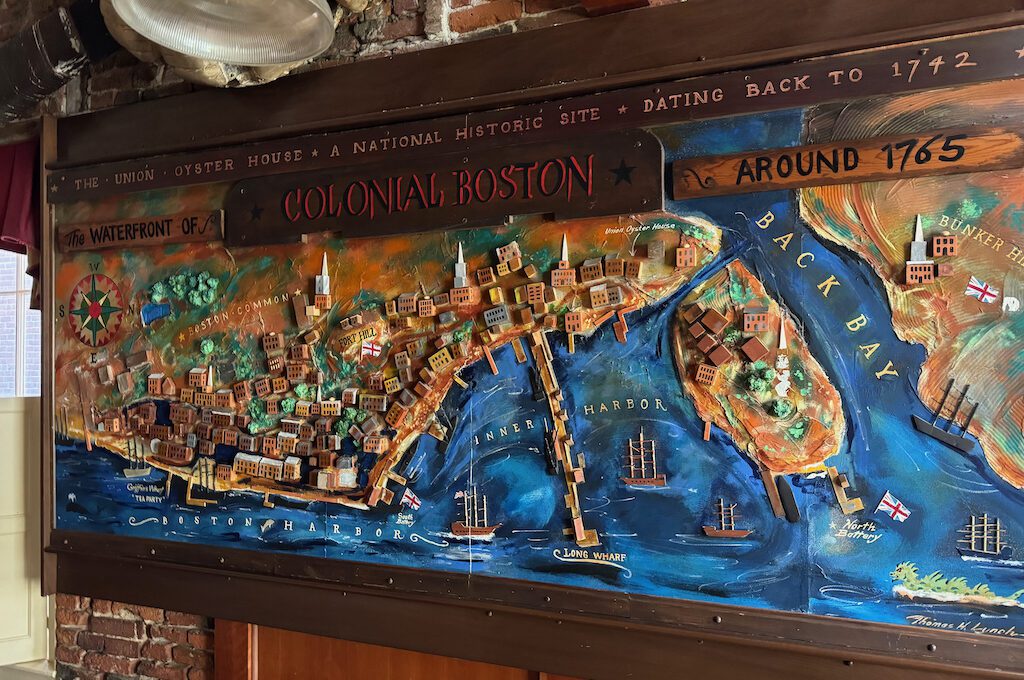
After my little exploration, I made my way back to our table just in time for our dishes to make their grand entrance.
The oysters kicked things off, and I have to give credit where it’s due – they were as fresh as a sea breeze. A dollop of horseradish and cocktail sauce, and they were as delicious as you’d expect from a renowned oyster house.
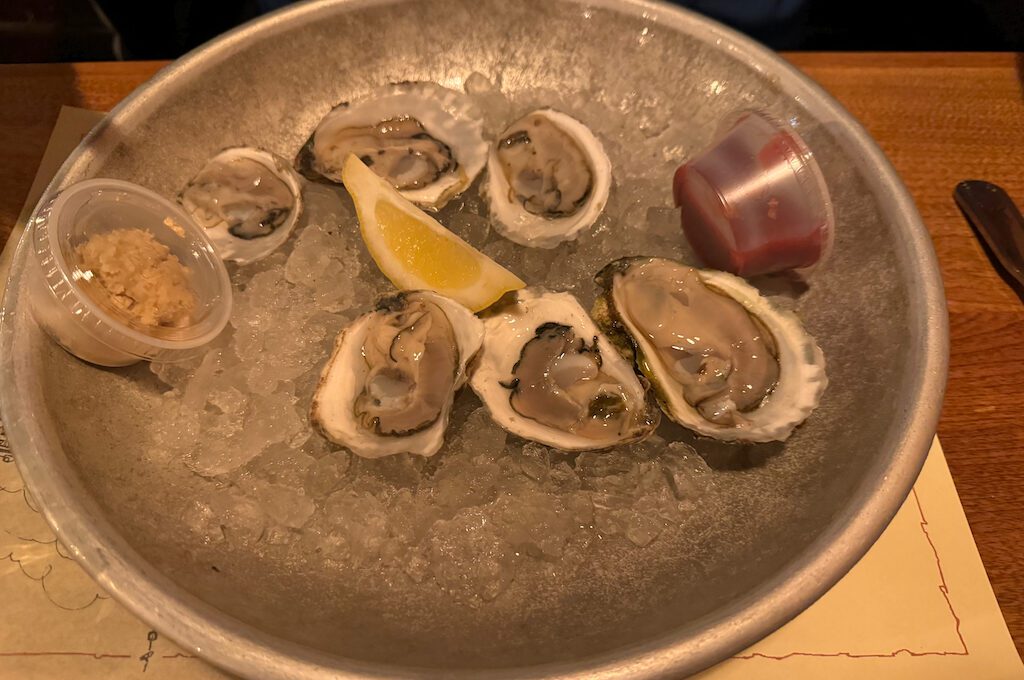
The crab cakes were decent, the clam chowder did the job, but, alas, the lobster roll left a bit to be desired.
Having recently savored a variety of top-tier lobster rolls in Maine, this one here paled in comparison, especially when you consider the $43 price tag.
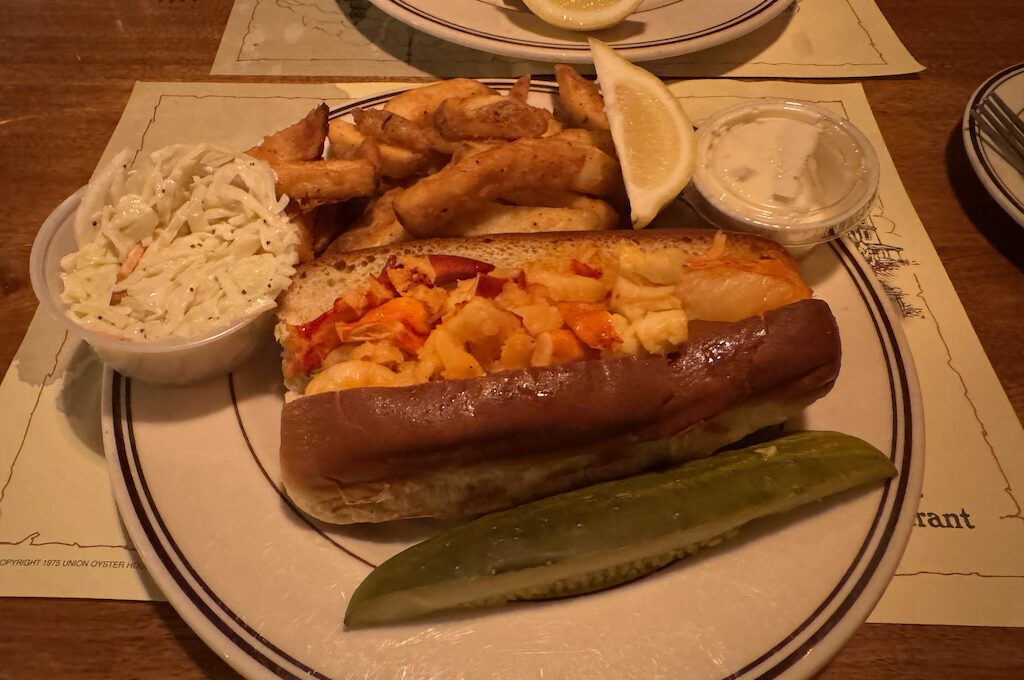
Now, let’s talk about our waiter for a moment. While he appeared to be a decent fellow, I must confess that he didn’t exactly win the “Most Personable” award that day. It’s one of those situations where you wish for a bit more of that warm and welcoming hospitality but you sort of feel like it’s just not who that person is. Kind of a tough spot.
But despite the culinary highs and lows, I was genuinely captivated by the Union Oyster House’s rich history.
The knowledge that it had played host to luminaries like Presidents Calvin Coolidge, Franklin Roosevelt, John F. Kennedy, and Bill Clinton, not to mention the legendary Daniel Webster, made it a setting that oozed with historical significance. And let’s not forget its role in the early days of the American Revolutionary War.
It’s worth delving into the Union Oyster House’s layout a bit. The restaurant actually comprises the original building and two neighboring brick row houses. However, those adjacent structures, dating from 1851 and 1916, only became part of the restaurant in the later part of the 20th century.
This tidbit is essential to keep in mind because I’ve heard grumblings from folks who found themselves seated in areas that didn’t quite exude the same ambiance as the main establishment. My hunch is that they ended up in one of those annexed spots.
So, if you want the full historical experience, don’t hesitate to make a special request to be seated within the heart of the original restaurant. That way, you won’t miss out on any of the authentic Union Oyster House charm.
Final word
All in all, I wholeheartedly recommend giving the Union Oyster House a visit, primarily for the treasure trove of rich and diverse history it offers.
This place is a one-of-a-kind gem, and I particularly enjoyed being seated upstairs, where the ambiance was a touch quieter, and you could soak in the proximity to the iconic JFK booth. The oysters, without a doubt, stole the show during our meal, whereas the other dishes didn’t leave a lasting impression.
But as I’ve mentioned earlier, despite the mixed experience in the culinary department, the Union Oyster House is a must for history buffs. It’s a place where the past comes to life, and that alone makes it well worth a visit. So, if you’re a fan of history and a side of fresh oysters, this is your spot.
Daniel Gillaspia is the Founder of UponArriving.com and the credit card app, WalletFlo. He is a former attorney turned travel expert covering destinations along with TSA, airline, and hotel policies. Since 2014, his content has been featured in publications such as National Geographic, Smithsonian Magazine, and CNBC. Read my bio.

